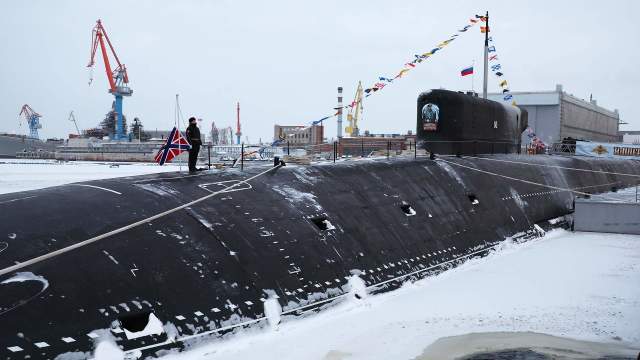Three new frigates will be equipped with modern domestic developments in the field of armaments
Russia has created a new headache for the Pentagon. The capabilities of nuclear submarines, over which Navy flags were raised on December 11 by order of President Vladimir Putin, have already caused panic in the United States. We are talking about two nuclear—powered submarines - the Emperor Alexander III and the Krasnoyarsk, intended for service in the Pacific Fleet. And on board the frigate Admiral Kasatonov, the commander-in-chief was informed about the completion of the ship's conversion into a carrier of hypersonic Zircon missiles. About the advantage these munitions give to the Russian navy and why potential opponents are so afraid of them, — in the Izvestia material.
Hypersonic frigate
On December 11, in Severodvinsk, on board the Admiral Kasatonov frigate, the Commander-in-Chief of the Navy, Admiral Nikolai Evmenov, reported to Vladimir Putin that all ships of the series would be upgraded to use the new Zircon hypersonic missiles, which were put into service in January 2023.
— The experience gained on the Gorshkov (frigate Admiral of the Fleet of the Soviet Union Gorshkov. — Izvestia), transferred here, the experience of two ships — on the Golovko ("Admiral of the fleet Golovko". — Izvestia). When it's already 10, then we can say that such an experience has been gained. We will continue to be on duty," Nikolai Evmenov said.
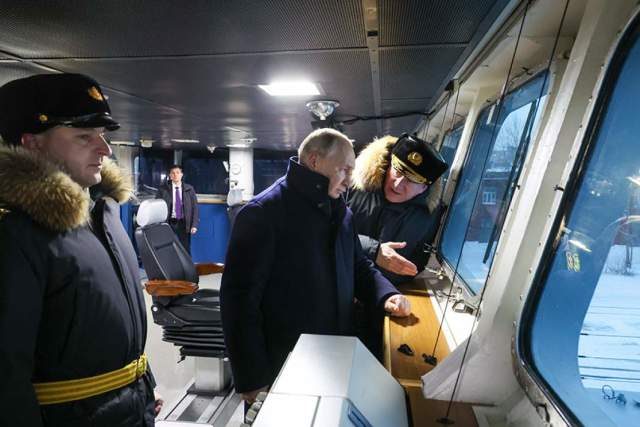
Russian President Vladimir Putin and Commander-in-Chief of the Russian Navy Nikolai Evmenov during an inspection of the frigate Admiral Kasatonov at JSC PO Sevmash
Image source: Photo: TASS/Mikhail Klimentyev
The commander of the Admiral Kasatonov, Captain 1st rank Alexey Ryaboshtan, in turn, reported to the president that four combat Zircons had already been loaded on board the frigate, and the ship's modernization was completed at the end of November.
Immediately after Admiral Kasatonov, Sevmash shipbuilders are waiting for the next frigate, Admiral Golovko, to be upgraded for Zircon missiles. According to a source of Izvestia in the Russian Defense Ministry, the third frigate will receive hypersound in early 2024.
Izvestia's help
Frigates of Project 22350 have been in service with the Russian Navy since 2018. Three active ships bear the names of famous Soviet admirals — Gorshkov, Kasatonov and Golovko. In total, 10 ships of this series are planned for construction. According to the project, the frigates are equipped with a so-called universal ship firing system, which allows the use of guided missiles of various types: "Calibers", "Onyx" and others.
The peculiarity of the new missile is flight at an altitude of up to 40 km at a speed of about 11 thousand km / h, which makes its interception almost impossible by existing systems in the world. According to open data, the NATO naval forces do not yet have missiles of this class in service - Western gunsmiths, unlike domestic ones, have not yet put hypersound in the series.
The Zircon is the first hypersonic anti—ship missile in the world that is not being tested, but has already been put into service, military expert Yuri Lyamin told Izvestia.
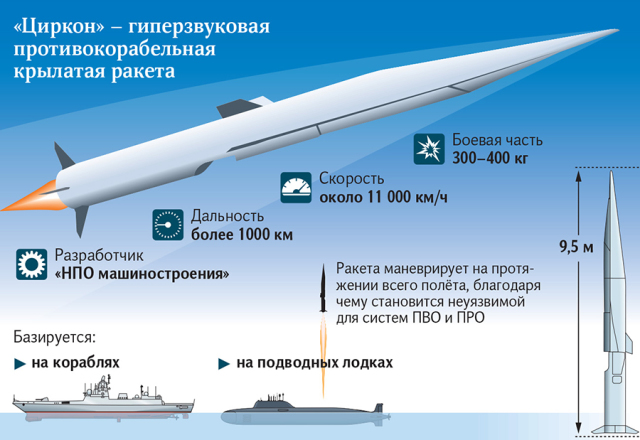
"It is important that it is already deployed on warships,— he clarified. — It cannot be intercepted, and a Russian ship that has come within striking distance poses a mortal danger to the enemy. The air defense systems of a potential enemy — the United States and NATO — will not repel such an attack. Western specialized literature quite rightly recognizes that they have not even experienced the interception of such missiles — they simply do not exist. For this reason, Zircons increase the striking power not only of individual frigates where they are installed, but also of our entire fleet. It is classified, and the interest of our potential opponents in this missile is, of course, extremely high.
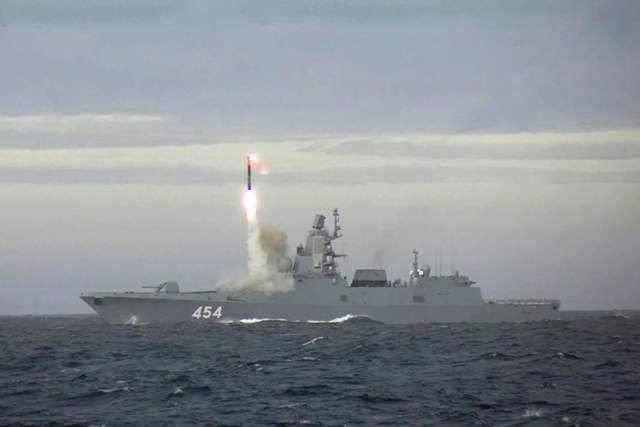
Launch of a hypersonic cruise missile "Zircon" at a naval target position located in the White Sea from the lead frigate of Project 22350 "Admiral of the Fleet of the Soviet Union Gorshkov" from the Barents Sea. May 28, 2022
Image source: Photo: RIA Novosti/Ministry of Defense of the Russian Federation
Back in December 2017, the American newspaper The Washington Post published an article with the headline "Russian submarines are prowling around vital underwater cables. It makes NATO nervous." The authors argued that Western countries rushed to strengthen their anti-submarine defense capabilities and develop improved aircraft for detecting submarines.
In October 2018, the Atlantic Council hosted a military-political discussion on the topic "The Next Battle for the Atlantic." Speaking at it, former Commander-in-chief of the US Navy in Europe and Africa, James Foggo, noted that Russia is aggressively expanding its presence in the Atlantic, while "the technical equipment of the submarine and surface fleets of the Russian Navy is impressive."
At the same time, Western countries decided to hold joint military exercises, which became a NATO attempt to mirror the Russian large-scale military maneuvers Vostok-2018.
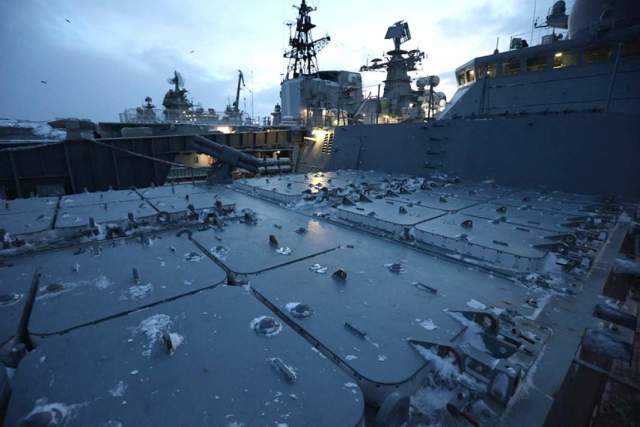
Containers containing charged hypersonic missiles "Zircon" on the deck of the frigate "Admiral of the Fleet of the Soviet Union Gorshkov"
Image source: Photo: RIA Novosti/Pavel Lvov
In May 2023, an article was published in the American magazine Newsweek, which noted that the Russian submarine fleet poses a critical threat to the North Atlantic Alliance and Western countries.
"NATO's anti-submarine capabilities atrophied after the end of the Cold War. If we exclude nuclear weapons, Russian submarines are the biggest threat that Russia poses to NATO," the authors of the material concluded.
According to the publication, Russian submarines are widely considered a "formidable force" and the United States and its allies are now trying to "catch up" in the arms race, since the Russian side can strike at any point in the United States.
Under the St. Andrew's flag
The idea to give the modern cruiser the name of Emperor Alexander III belongs to Vladimir Putin himself. He expressed it in 2014, when the Minister of Culture of the Russian Federation Vladimir Medinsky handed over to the president the restored St. Andrew's flag from the last battleship of the Russian Imperial Navy, which was also called "Emperor Alexander III".
This is probably why the solemn ceremony of raising the flag on the new cruisers with the personal participation of the president was scheduled for December 11, when the St. Andrew's Flag day is celebrated in Russia.
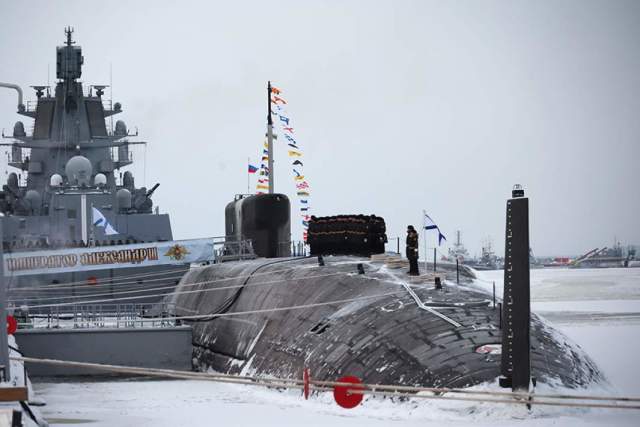
Sailors on the nuclear submarine "Emperor Alexander III" during the solemn ceremony of raising the naval flag at JSC PO Sevmash in Severodvinsk. In the background is the frigate Admiral Kasatonov
Image source: Photo: RIA Novosti/Kirill Iodas
The Severodvinsk shipbuilders laid down the strategic submarine "Emperor Alexander III" on December 18, 2015. Last December, Vladimir Putin also took part in the launch ceremony of the missile carrier, but in a videoconference mode.
In November of this year, during state tests, a strategic missile carrier successfully carried out a test launch of a Bulava ballistic missile from the White Sea at a target at the Kamchatka Kura test site. The strategic cruisers of Project 955 Borey and 955A Borey-A are the basis of Russia's naval strategic nuclear forces. They carry 16 R-30 Bulava intercontinental ballistic solid-fuel missiles on board. Their flight range is more than 9 thousand km. It is almost impossible to intercept these munitions — they are equipped with separable head units with a capacity of up to 150 kt.
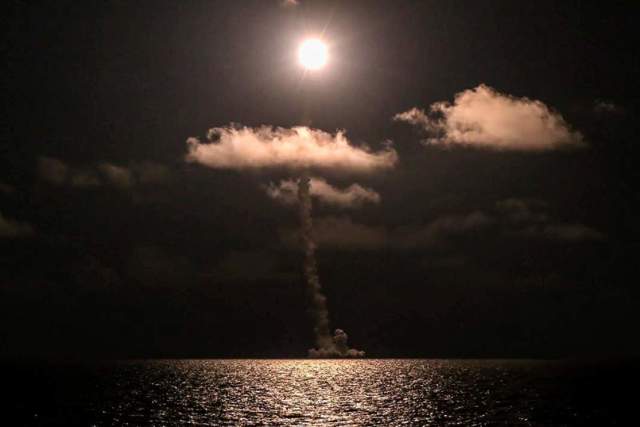
The test launch of the Bulava intercontinental ballistic missile from the new nuclear-powered submarine Imperator Alexander III. November 5, 2023
Image source: Photo: TASS/Ministry of Defense of the Russian Federation
The crew of the 170 m long submarine is 107 people. The surface speed of the boat is 15 knots, and the underwater speed is 29. The maximum diving depth is 480 m.
The strategic missile carrier "Emperor Alexander III" became the seventh ship in the series of the Borey project. According to Vladimir Putin, the Russian Navy will receive three more submarines of this project.
"Zircons" under water
The nuclear submarine Krasnoyarsk, built according to the Yasen-M project, will also be armed with hypersonic Zircons. It was laid down in 2014 and launched on July 30, 2021, becoming the fourth ship in the series.
The cruiser first went on sea trials in the White Sea in the summer of 2022. And in November, he fired Kalibr and Onyx ammunition from an underwater position. One missile was launched from a torpedo tube, the second from the UKSK firing complex, which can also be used for the Zircon.
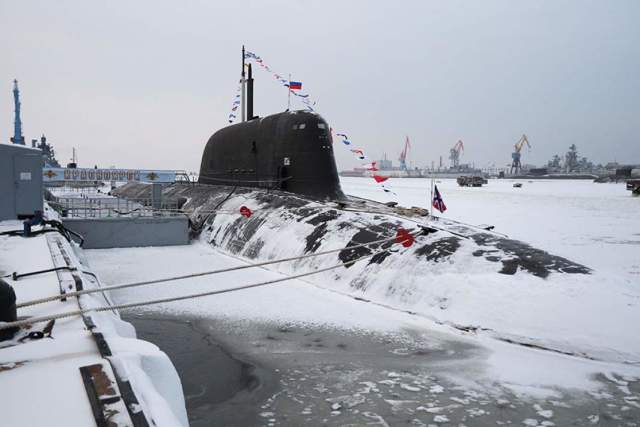
The nuclear submarine Krasnoyarsk during the solemn ceremony of raising the naval flag at JSC PO Sevmash in Severodvinsk
Image source: Photo: RIA Novosti/Kirill Iodas
The displacement and length of the ships of the modified Yasen-M project have become smaller. Compared to the first Ash Trees, they became shorter by 9 m — 130 instead of 139. The crew was also reduced from 90 to 64 people.
The new submarine uses a mixed design system, when the lightweight hull covers only a part of the durable one in the bow to reduce noise. It is made of high-strength steel, which allows the ships of the project to dive to a depth of more than 600 m. The reactor of the submarine is made using new technology and can work for 25-30 years without recharging, which is comparable to the service life of a cruiser.
Andrey Krasnobaev
Julia Leonova
Bogdan Stepovoy
